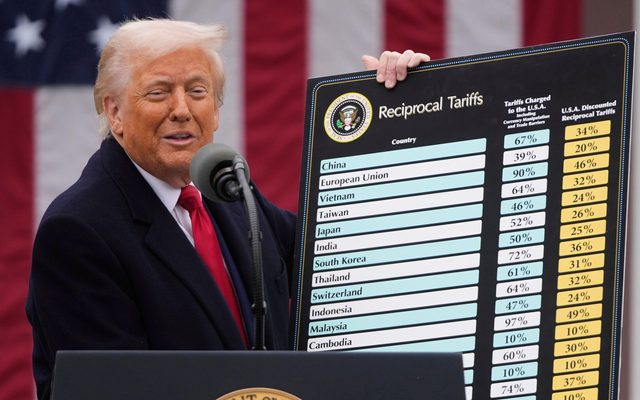This article is from the Australian Property Journal archive
THE Reserve Bank is more likely to hike interest rates than not in the wake of last week’s inflation data, according to Capital Economics, which has cautioned that “the last mile will be hardest” before an easing cycle begins.
Capital Economics Australia and New Zealand economist Abhijit Surya said in a note the Australian Bureau of Statistics’ release of consumer price index (CPI) data “made for grim reading”, with the CPI rising a stronger-than-expected 1.0% in March quarter.
“With price pressures proving more stubborn than most had anticipated, markets have now given up any hopes that the RBA will cut rates this year,” Surya said in the note, RBA more likely to hike than not.
“While we agree that policy loosening is a distant prospect, we think investors are under-pricing the likelihood of a rate hike. Given the material upside surprise in the CPI figures, we think there’s a solid case for the Bank to flip the switch and resume its tightening cycle.”
The Reserve Bank held interest rates again at 4.35% at its last meeting on the back of more favourable inflation and economic data that suggested its 13 rate hikes since May 2022 had been making the intended impact. A shift in the language coming from the RBA and governor Michele Bullock in explaining the decision was described by analysts around interest rates as “dovish”, although Bullock also retained a firm line that the board “can’t rule anything in or out” on future movements.
Surya outlined four factors underpinning the firm’s view, saying that inflationary pressures are stronger than the RBA had anticipated just two months ago.
“In order for trimmed mean inflation to fall in line with the RBA’s forecast for Q2, trimmed mean CPI would have to rise by just 0.6% quarter-on-quarter this quarter. That would represent a significant step down from the 1.0% quarter-on-quarter rise recorded in Q1 and its softest outturn in three years. While business surveys do point to a slight moderation in trimmed mean inflation, we suspect it will still overshoot the RBA’s current forecast.
“Second, the RBA has long been vocal about its concerns regarding the potential for services inflation to prove sticky. That unease will only have deepened following the revelation that, on a sequential basis, services price inflation actually accelerated anew last quarter.
“Third, the labour market has continued to fire on all cylinders. The unemployment rate has largely moved sideways over the past six months.” Currently at 3.9%, Surya said it is “well on its way” to undershoot the RBA’s forecast of 4.2% in the June quarter.
Surya also said that economic activity “seems to have gained fresh vigour in recent months”. According to flash PMI data week, Australia’s composite output index rose to a two-year high of 53.6 in April, with data consistent with real GDP growth of about 3% year-on-year.
“Although the PMI numbers haven’t always been a reliable guide to the hard data, they nonetheless suggest upside risks to the RBA’s forecast for growth of just 1.3% this quarter.”
“Taken together, the case for policy tightening looks quite compelling to us.”
Following the release of the data, Westpac economists pushed out the timing of a rate cut to November 2024, in line with the current forecasts from NAB and ANZ, which have not changed. CBA is now the only big four bank expecting the first cash rate cut to come earlier in the year, in September, although they have said the risk lies with it coming at the following meeting scheduled for November.
ANZ head of Australian economics Adam Boyton said the message we are “inclined to take from the CPI is: be patient”.
“That doesn’t just apply to the economic data flow, but it also applies to the easing cycle. It is likely to start late this year (at the earliest) and will be very mild.
“Our forecasts remain a November start, with just 75 basis points of easing in total over 2024 and 2025.”
Boyton noted that it was in May last year with the hike to 3.85% that the RBA took the cash rate to what the ANZ consider “restrictive” levels.
“With monetary policy typically having its largest impact in a year and a bit after a cash rate change, we have not yet seen the economic data prints that encompass the full spectrum of what the RBA has done.
“Balanced against that are the upcoming Stage 3 tax cuts…Without the tax cuts, we would see GDP growth of around 1.25% this year and consumer sentiment stuck in the doldrums along with spending. With them growth is still below trend this year, even with a pick-up in consumer spending.
“And even with the tax cuts, policy is still on the restrictive side of neutral. Unless, that is, you think that the neutral nominal rate is at or above 4%. Given the performance of the economy over the past year (GDP growth below trend, a softening in the labour market and lower inflation), that doesn’t quite gel. Especially given the usual long and variable lags.”




